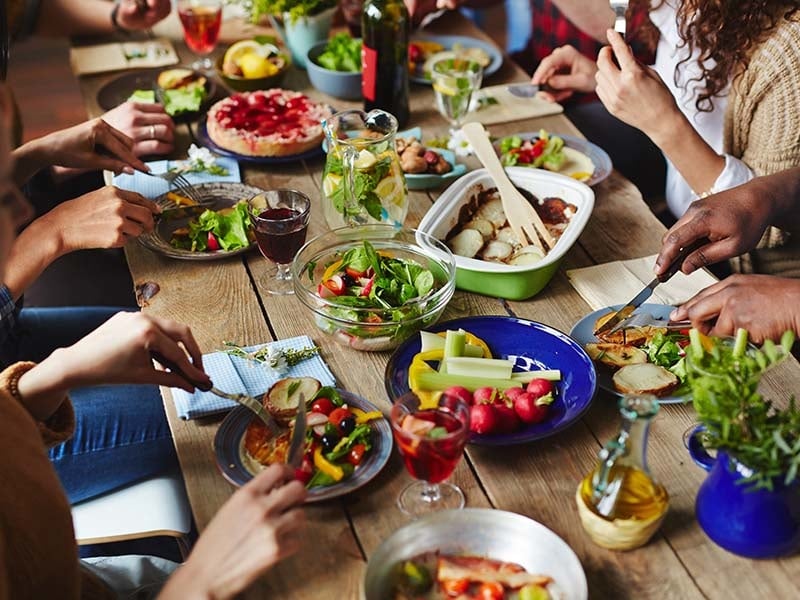“Food-Friendly” Wines
- Posted on
- Posted in chassalas, Freisa, Italy, merlot, Sangiovese, switzerland, vioginer
- 0

This week’s blog from City Vino discusses the topic of “food-friendly” wines. What makes a wine “food-friendly”? According to Dave McIntyre of the Washington Post, in his article titled “What does it mean for a wine to be ‘food-friendly’? Here’s what to look for.”, Dave states “A truly food-friendly wine plays nicely with a wide variety of foods, from sweet to savory to spicy, from meat to fish to veggies — not a unicorn wine for a ‘perfect pairing’ with a specific dish.”
Also from this article, McIntyre points out that “Two factors make wines versatile with food. The first is acidity. A wine with pronounced acidity (which is different from wine being sour) will cleanse your palate and leave you wanting more. A tart yet fruity rosé will cut through garlicky, briny and spicy dishes with equal aplomb.” Some wine drinkers consider themselves to be “acid heads,” who love the bright and even raciness that comes from a wine with high acidity, which tends to be from cooler regions or from high-acid grapes. Dave directly notes that rosé, riesling, pinot noir, and barbera fit the category for having high acidity levels that make the wine versatile with food.
McIntyre’s second factor that makes wine pair with food is bubbles. Yes, bubbles, my friend. Per Dave, “go for bubbles, the second characteristic that defines food-friendly wines. As I’m fond of saying, bubbles go with everything. The effervescence of a sparkling wine effectively scrubs your mouth and readies you for the next bite of food or sip of wine. Sparkling wines also tend to be refreshingly acidic. We do ourselves an injustice by relegating champagne and other bubblies, such as Italian prosecco or Spanish cava, to celebratory toasts or pre-meal aperitifs.” Personally, your humble blog writer recently enjoyed a lovely steak with a glass of Louis Roederer champagne, and they were perfect partners for my palate.
Matt Stamp, a Master Sommelier, is quoted in McIntyre’s article saying “Food-friendly wines are those that don’t bulldoze the food. They tend to be thirst-quenching, and they drive with acidity—a refreshing quality and brightness— instead of the weight and heat of alcohol. They can work well with a broad range of dishes, because acid in wine gives life to the palate, much like a spritz of lemon gives life to a dish.” I agree, Matt.
The Enofylz Wine Blog, in their article “What Are The Most Food Friendly Wines?”, author Martin Redmond states that he considers food-friendly wines to have the following characteristics, “1) Palate-cleansing acidity, 2) Lots of fruitiness with low tannins, and 3) Balanced components (i.e. fruit, acidity, and tannins).” Redmond suggests wines like beaujolais, riesling, rosé, and sparkling wines, among others, for their food-friendly characteristics.
City Vino’s weekend tasting August 5th and 6th, will feature food-friendly summer wines. We will be featuring the following wines:
- 2021 Selva Sangiovese Bianco, which is a white wine made from 100 percent Sangiovese. This wine has aromas and flavors of rose petals, grapefruit, and citrus zest.
- 2021 Delea Marengo Bianco, from Ticino, in Switzerland. The wine is 60 percent Chasselas, blended with 40 percent Merlot. It has aromas and flavors of white blossoms, mango, red cherries, and lemon.
- 2021 Casale del Giglio Viognier, from the Lazio region in Italy, and is 100 percent Viognier. Yes, this is a Viognier from Italy, not France or Virginia. Who knew? This wine has aromas of apricots, grapefruit zest, white flowers, honeysuckle, and chamomile.
- 2021 Azienda Agricola 499 Grela Freisa, from the Piedmont, in Italy, and is 100 percent Freisa. The grape is a relative of Nebbiolo, and has notes of bright strawberry, tart cherry, spice, and earth.
While we didn’t supply food pairing suggestions for these wines, we suggest you try pairing them yourselves. See what works well together and let us know! Cheers to food-friendly wines!

Comments
Be the first to comment...